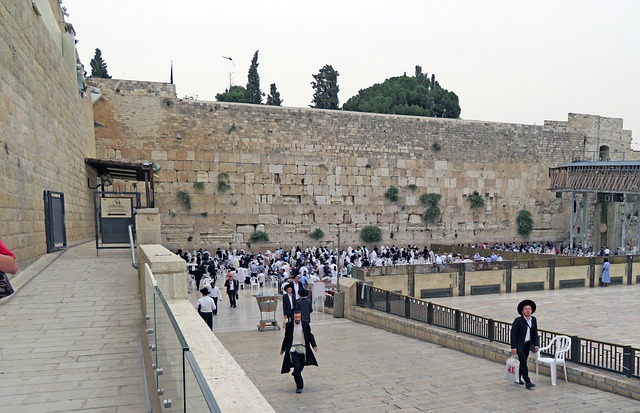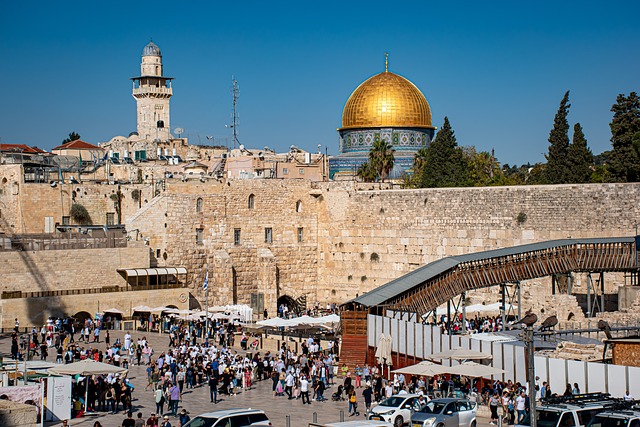The Western Wall
The Western Wall, a revered Jerusalem landmark, captivates tourists with its spiritual resonance. As a remnant of the ancient Jewish Temple, it holds immense historical and religious significance. Visitors come to offer prayers, place notes in its crevices, and reflect upon its enduring symbolism. The Wall’s weathered stones embody a connection to generations past, making it a profound and contemplative destination for all.
Table of Contents

Western Wall History
The Western Wall, known as the “Kotel” in Hebrew, is an iconic and revered landmark located in the heart of Jerusalem’s Old City. For tourists embarking on a journey through its history, the Western Wall offers a profound glimpse into the layers of time, spirituality, and cultural significance that have made it a focal point for people from all corners of the globe.
Ancient Origins: A Link to the Temple Mount
The Western Wall stands as the last remaining remnant of the Second Jewish Temple, which was originally built by King Herod the Great in the 1st century BCE. This temple held a central place in Jewish worship, serving as a spiritual and cultural hub for the Jewish people of the time.
For tourists, this ancient connection to the temple provides a tangible link to the history and faith of generations past. The massive stone blocks that make up the Western Wall are a testament to the engineering prowess of the time and the enduring legacy of the Jewish people.
A Site of Mourning and Remembrance
In the year 70 CE, the Second Temple was destroyed by the Romans in a devastating event that reshaped the course of Jewish history. The Western Wall, which was part of the supporting retaining wall of the Temple Mount, remained standing, serving as a tangible reminder of what was lost. For tourists, this wall of stones becomes a place of mourning and remembrance, evoking the collective pain and resilience of the Jewish people.
Spiritual Significance: A Place of Prayer
The Western Wall has evolved over the centuries to become more than just an architectural relic; it is a living testament to faith and devotion. For Jewish people around the world, the wall holds profound spiritual significance. Visitors will often witness the sight of individuals engaged in fervent prayer, their foreheads and hands pressed against the ancient stones.
Tourists have the opportunity to experience this profound spiritual energy, whether by participating in their own moments of reflection or by observing the faithful as they place handwritten notes containing prayers and wishes into the crevices of the wall. These notes are a tangible representation of the connection between the past, present, and future, as visitors join a global tradition of seeking solace, guidance, and hope at this historic site.
Symbol of Unity: Crossing Cultural Boundaries
The Western Wall’s significance extends beyond religious boundaries, resonating with people of diverse backgrounds and beliefs. It serves as a powerful symbol of cultural heritage, a focal point for interfaith dialogue, and a testament to the shared human experience of longing, loss, and reverence.
Tourists, regardless of their religious affiliations, can find common ground in the story the Western Wall tells—a story of a people bound by history and faith, and a story that transcends geographical and ideological borders.
The Tunnel Experience: Exploring the Past
One of the most immersive ways for tourists to delve into the history of the Western Wall is by exploring the Western Wall Tunnels. These underground passages take visitors on a journey through the layers of history that lie beneath the bustling streets of the Old City.
As tourists venture through these tunnels, they can observe the ancient architecture, stone carvings, and water channels that once served the temple complex. The tunnels offer a glimpse into the intricate engineering of the past and shed light on the daily life of those who inhabited this ancient city.

Preservation and Controversy: A Complex Landscape
While the Western Wall is a site of historical and spiritual significance, it has also been the subject of political and cultural debates. In the 20th century, Jerusalem’s status and control over its holy sites became points of contention. For tourists, this complex landscape provides insight into the challenges of balancing cultural heritage, religious freedoms, and political realities.
A Window into Timelessness
As tourists stand before the Western Wall, they are not only witnessing a physical structure but stepping into a continuum of history. The stones, weathered by time and polished by countless hands, whisper stories of devotion, resilience, and unity.
For those who seek a deeper understanding of Jerusalem’s history and the layers of human experience, it holds, the Western Wall offers a remarkable opportunity. As visitors touch the same stones that countless pilgrims, worshipers, and seekers have touched throughout the ages, they become part of a timeless narrative—a narrative that speaks to the enduring connections between people, faith, and the human spirit.
A visit to the Western Wall is an important part of any daily tour in Israel that usually departs from Jerusalem or Tel Aviv. It is recommended to purchase their tickets
Home » Places to Visit » Visit Jerusalem » The Western Wall